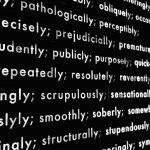If you’ve recently discovered your antivirus flagged something called FileRepMalware, you might be wondering what exactly this threat is. Despite its cryptic name, FileRepMalware isn’t necessarily a virus in the traditional sense—but it’s definitely something worth paying attention to. This article will help clarify what FileRepMalware is, the risks it poses, and how you can effectively remove it from your system.
What is FileRepMalware?
FileRepMalware is a generic detection tag used by several antivirus programs, such as Avast and AVG. It typically indicates that a particular file is suspicious or potentially harmful, but not necessarily confirmed to be malicious. This label is often applied to files that:
- Have a low reputation score in the antivirus software’s database
- Are not signed by a trusted publisher
- Have been rarely downloaded or are associated with suspicious behavior
In many cases, the FileRepMalware tag is associated with pirated software, key generators, or obscure freeware with poor download records. However, cautious users should not ignore it—some of these files can indeed be malicious or may serve as a gateway for more serious malware.

Potential Risks of FileRepMalware
Although the presence of FileRepMalware doesn’t always mean you’re infected by a full-blown virus, there’s still considerable risk involved. These risks include:
- System slowdown: Malware-laden files may use up system resources, affecting performance.
- Data theft: Some versions of FileRepMalware can serve as remote access Trojans (RATs), exposing your personal or financial data.
- Adware and pop-ups: Suspicious files may install additional software that floods your device with advertisements.
- Installation of other malware: A trojan marked as FileRepMalware can pull additional malicious software into your machine.
Even if the file is a false positive, it’s best to treat it with caution until you’re certain it’s safe.
How Does FileRepMalware Infect a System?
FileRepMalware often finds its way onto computers through sources like:
- Unverified downloads — from peer-to-peer sharing platforms and unofficial websites
- Bundled software — it may piggyback with legitimate-looking programs
- Email attachments — especially those sent from unknown senders
- Fake software activators and keygens, commonly used to crack paid software

How to Remove FileRepMalware
Removing FileRepMalware requires a multi-step approach. Here’s a reliable way to do it:
- Run a Full Antivirus Scan: Use a trusted antivirus program like Avast, AVG, or Malwarebytes to perform a deep scan. Quarantine or delete any threats found.
- Check for Unwanted Programs: Go to your system’s installed programs list and uninstall anything suspicious or recently added without your consent.
- Clear Temporary Files: Use tools like Disk Cleanup or CCleaner to delete potentially harmful cached files.
- Update Your Software: Outdated software can be a vulnerability for malware. Keep your operating system and antivirus updated.
- Use a Second Opinion Scanner: Consider running a secondary malware scanner to confirm your system is clean.
If you’re unsure about a program, check its file reputation online using services like VirusTotal, which aggregates data from multiple antivirus sources.
Preventing Future Infections
The best way to deal with threats like FileRepMalware is to avoid them altogether. To keep your system safe:
- Download software only from official sources
- Enable real-time protection in your antivirus software
- Avoid opening email attachments from unknown sources
- Regularly update all software and security patches
- Use a secure and regularly up-to-date firewall
Also, consider enabling your web browser’s safe browsing features, which can warn you about malicious sites before you interact with them.
Final Thoughts
While FileRepMalware isn’t always synonymous with a dangerous infection, it’s a clear sign that something warrants a closer look. Whether it’s an untrusted file, dangerous software bundle, or a full-blown trojan, vigilance is key. By understanding what FileRepMalware is and following thorough removal practices, you can ensure your system remains both secure and efficient.

